Are you eager to discover the diverse range of animals roaming Ireland’s countryside and coastal waters? Irish wildlife, from the woodlands’ secretive pine martens to the expansive sea’s visiting whales, awaits your discovery. This article guides you through the habitats of Ireland’s unique fauna, revealing not just what lives here but where to marvel at these creatures in their natural settings.
Key Takeaways
Ireland’s ecosystems support diverse species, including rare and endangered ones such as the pine marten, red squirrel, and great yellow bumblebee, plus a rich marine life including dolphins and whales, signifying high biodiversity.
Irish National Parks like Killarney and Connemara are critical sanctuaries for wildlife conservation, offering natural habitats for various species and attracting nature enthusiasts for their unique geographical features and biodiversity.
Conservation efforts and rewilding in Ireland are focused on protecting the country’s biodiversity, with numerous initiatives such as the Arden Wood Pine Marten Project helping to enhance understanding and stimulate the resurgence of species.
Ireland’s Rich Biodiversity
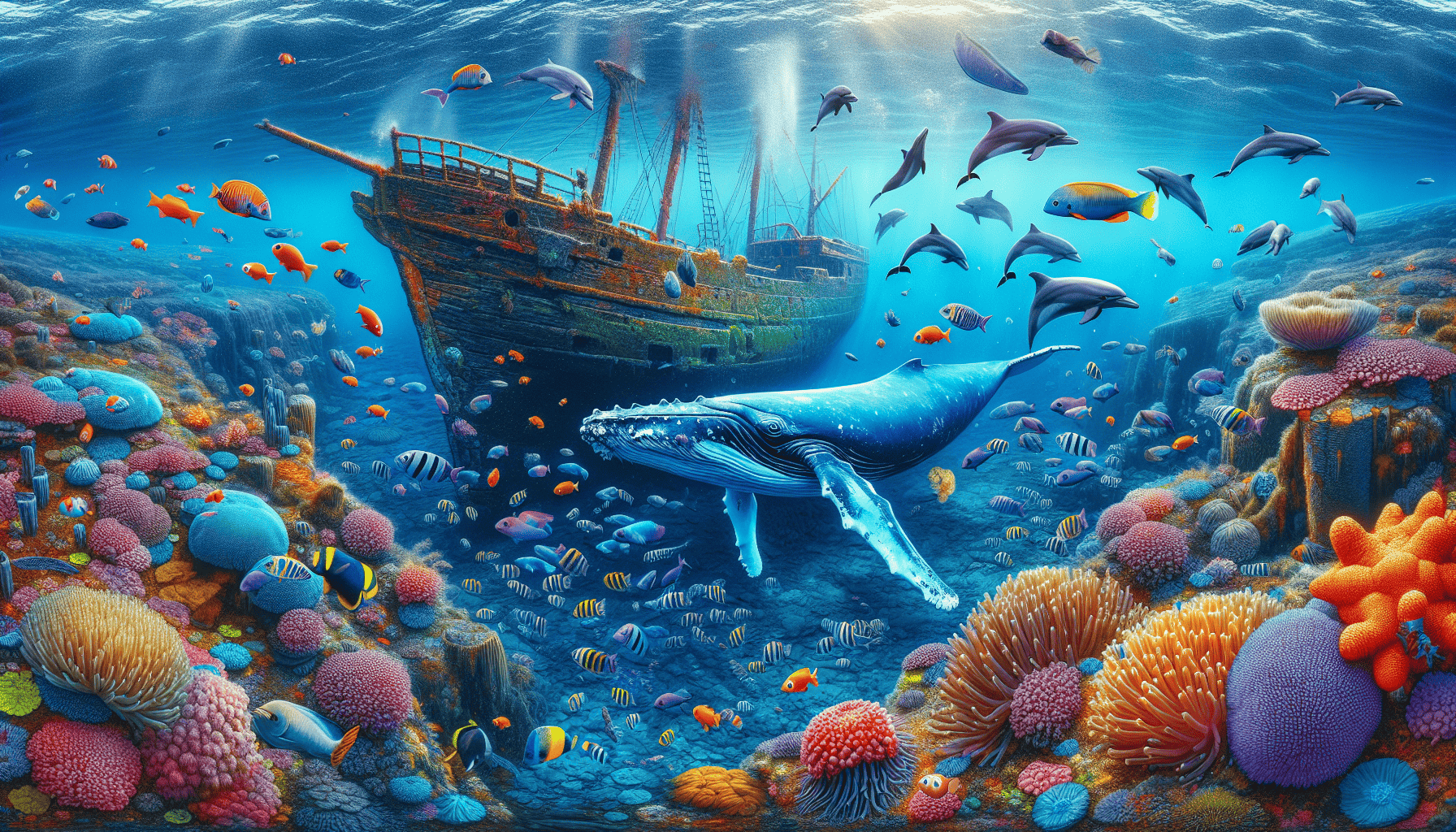
Ireland’s diverse ecosystems support a wide range of animal species. Its unique environments, such as hazel woodlands, are home to a variety of creatures, including:
Pine marten
Irish lady’s-tresses
Red squirrel
Lesser horseshoe bat
Great yellow bumblebee
The Irish fauna is not limited to land, as the waters around Ireland teem with life, hosting a diverse range of marine species such as dolphins, seals, fin whales, and other whales.
Common terrestrial animals in Ireland include the red fox, European hedgehog, stoat, otter, pygmy shrew, badger, along with notable native species such as the red deer and Irish hare. Ireland also hosts a diverse range of bird species, such as the Tawny Owl, Willow Tit, Nuthatch, and various woodpeckers, making it a great destination for bird watching.
Marine Life
Particularly the west coast, Ireland’s waters house a treasure trove of marine life. From playful dolphins to majestic whales, to the enigmatic basking sharks, the waters around Ireland teem with an impressive array of marine organisms. The Irish coasts, including the east coast, are inhabited by:
Harbour porpoise
Bottlenose dolphin
Common dolphin
Minke Whale
These offer an unforgettable sight for marine life enthusiasts.
In addition to these well-known marine mammals, the oceans of Ireland also host a variety of other species, including dogfish, sunfish, and lobsters. It’s worth noting that brown bears, now extinct, were once native to Ireland during the ice age, indicating the rich and diverse history of Irish fauna.
Terrestrial Mammals
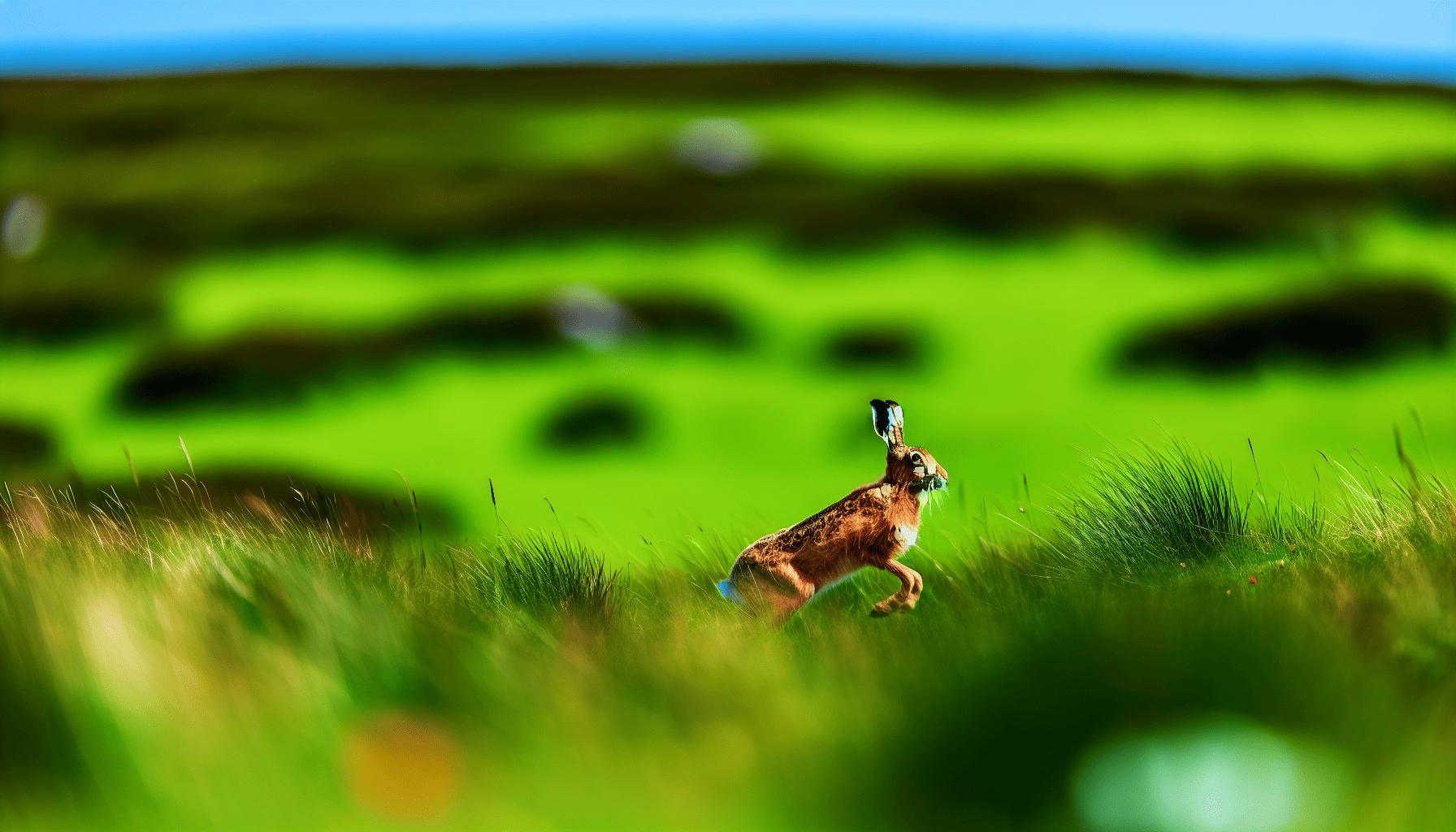
A diverse array of terrestrial mammals thrive across Ireland’s landscapes. Among these, the indigenous mammals include:
The elusive pine marten
The Irish hare
Badgers
Red deer
The Connemara pony
The pine marten, in particular, is a fascinating creature, similar in size to a domestic cat and known for its lengthy tail, rounded ears, and distinct creamy-yellow bib on the throat.
The Irish hare, another native species, is frequently found in various habitats including coastal dunes, mountain tops, and grasslands, showcasing the adaptability of many species in Ireland. Red deer are another notable species, known for their rich red-colored coat that darkens to a greyish brown in winter, and their large rack of antlers used for sparring between rivals.
The population of badgers is more concentrated in the south west of the country, with an estimated 250,000 individual badgers across 50,000 occupied setts in Ireland. The Connemara pony, a native of Ireland, has seen a substantial decrease in population due to factors such as insufficient food, economic hardship, and disease.
Avian Wonders
Ireland is a birdwatcher’s paradise, hosting a diverse range of bird species. From the Tawny Owl and Willow Tit to the Marsh Tit, Nuthatch, and various woodpecker species, these avian wonders can be observed in various habitats across the country. Moreover, Ireland’s temperate climate also attracts migratory birds such as the Brent Goose, Whooper Swan, and a variety of waders and waterfowl, making it an exciting destination for bird enthusiasts.
Gannets and kittiwakes are among the common bird species in Ireland. Gannets are typically known to nest on coastal cliffs, utilizing the natural environment for breeding purposes. Kittiwakes are characterized as small to medium-sized gulls with a grey back, white underparts, dark eyes, a yellow bill, and black legs. They are the only species of gull that exclusively nests on cliffs.
In addition, Ireland is home to several notable rare bird species, including:
Veery
White-rumped Sandpiper
Swainson’s Thrush
Rustic Bunting
Spotted Sandpiper
Little Bunting
Rose-coloured Starling
Short-toed Lark
The Magic of Ireland’s National Parks
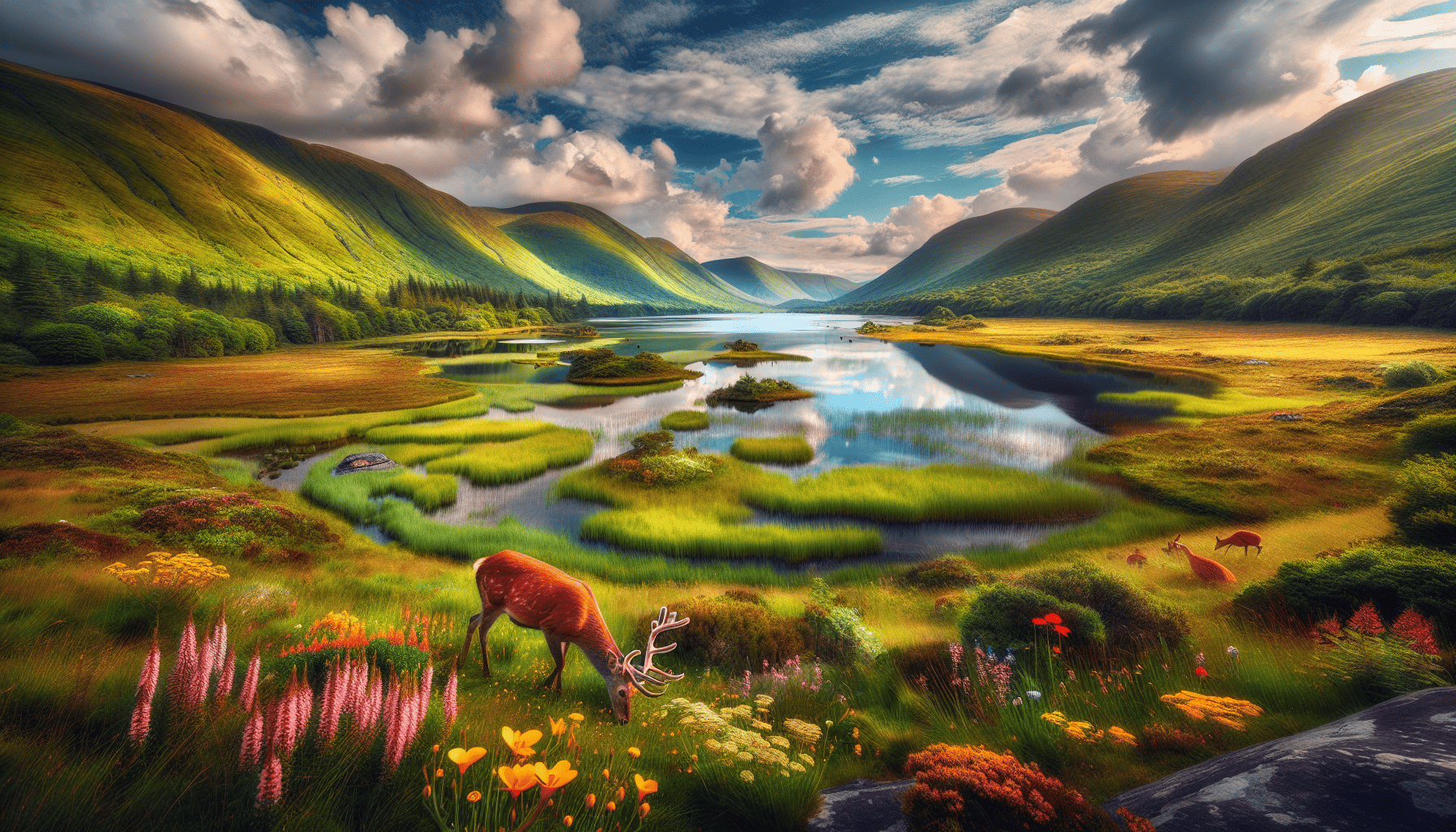
Serving as a haven for wildlife, Ireland’s national parks offer visitors a chance to appreciate the country’s natural heritage. The inaugural national park in Ireland, Killarney National Park, was founded in 1972 and is an important part of the Irish landscape and its conservation efforts. The national parks are home to various protected species and contribute significantly to wildlife conservation by providing habitats for a diverse range of bird and mammal species.
Some of the national parks in Ireland include:
Killarney National Park
Glenveagh National Park
Burren National Park
Connemara National Park
Wicklow Mountains National Park
These parks offer stunning landscapes, hiking trails, and opportunities for wildlife spotting. They are a must-visit for nature lovers and those looking to explore the beauty of Ireland’s natural environment.
Apart from their rich biodiversity, these parks also offer distinctive geographical features. Killarney National Park, for instance, is characterized by bogs, lakes, moorland, mountains, waterways, woodland, parks, and gardens, while Connemara National Park showcases mountains, bogs, heaths, grasslands, and forests. These unique features, along with the diverse wildlife they host, make Ireland’s national parks a must-visit for nature enthusiasts.
Killarney National Park
Killarney National Park, nestled in the heart of the Irish landscape, acts as a sanctuary of biodiversity. Visitors can anticipate observing a variety of wildlife, including:
Foxes
Hares
Rabbits
Badgers
Pine marten
Red deer
Sika deer
Red squirrel
Various insects
The red deer in Killarney National Park represent the last surviving indigenous herd in Ireland, having inhabited the area since Neolithic times. Their presence continues to be a prominent attraction for the park today.
The park is also a haven for bird watchers, with a diverse range of bird species that can be sighted, including:
Northern Goshawk
Bald Eagle
Red-shouldered Hawk
Broad-winged Hawk
White-tailed Sea Eagle
White-winged Crossbill
Barred Owl
Ruffed Grouse
Yellow-bellied Sapsucker
Hairy Woodpecker
Blue Jay
American Crow
Greenland White Fronted Goose
The unique and diverse ecology of Killarney National Park, located in County Kerry, coupled with its extensive area of semi-natural native woodland – the largest in Ireland – makes it a must-visit for wildlife enthusiasts.
Connemara National Park
Another gem in Ireland’s crown, Connemara National Park, plays a significant part in wildlife conservation. The park provides habitats for a diverse range of bird and mammal species and is actively engaged in the protection and preservation of its deer population. Established in 1980, the park covers 2,000 hectares of:
mountains
bogs
heaths
grasslands
forests
offering a diverse habitat for its wildlife.
The park’s diverse range of attractions includes:
Diamond Hill
Sky Road
Killary Sheep Farm
Dog’s Bay Beach
The Point Equestrian Centre and Pony Trekking
Killary Fjord
Lettergesh Beach
Kylemore Abbey
Derrigimlagh Bog
Numerous walking and hiking trails
These attractions make it incredibly appealing to nature enthusiasts.
The optimal time to visit Connemara National Park for observing wildlife is during the summer when the days are warmer and longer, providing more opportunities to spot wildlife.
Rare and Endangered Species
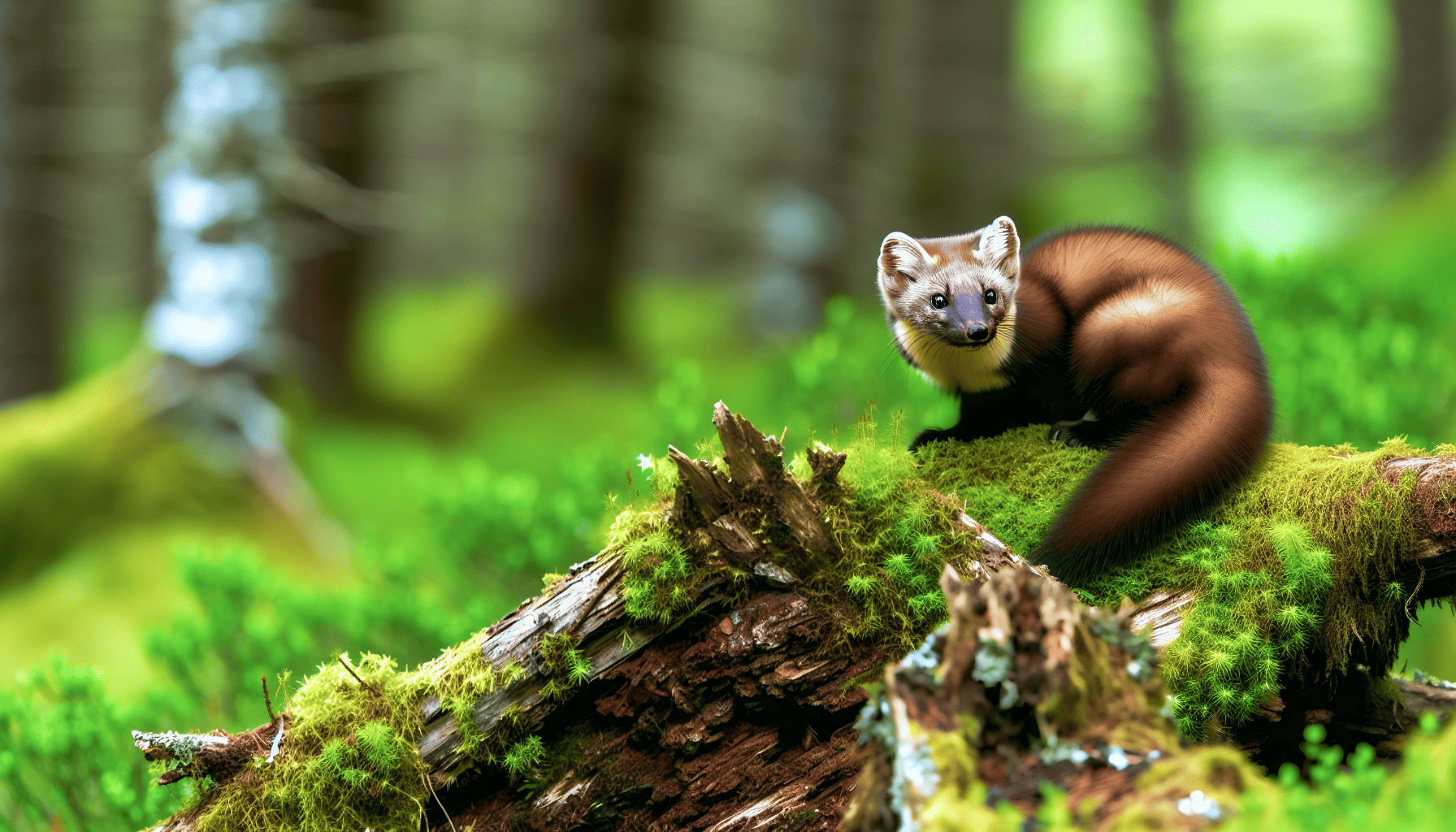
Despite Ireland’s rich biodiversity, certain species like the pine marten, otters, red squirrels, and the great yellow bumblebee are rare and endangered. The pine marten has been afforded protection under the Wildlife Act 1976, attributed to past reductions in its range and population. Initiatives such as the Arden Wood Pine Marten Project are enhancing the understanding of the species and have played a role in the resurgence of pine martens in Northern Ireland.
The otter population in Ireland is relatively stable and is considered one of the most stable in Europe. However, the Great Yellow Bumblebee is considered to be quite rare and has been classified as Endangered on the Irish Red List. The red squirrel population in Ireland is being affected by:
competition with grey squirrels
predation from avian predators and land animals such as domestic cats or foxes
the spread of squirrel pox virus by grey squirrels.
The Influence of History and Legend on Irish Wildlife
The perception and understanding of the country’s wildlife have been shaped by Irish history and legends. Animals such as hares are linked to the Otherworld and are regarded as mystical, thereby further shaping the perception of wildlife in Ireland. The historical account of St. Patrick banishing snakes from Ireland has become a widely-known legend, despite the fact that post-glacial Ireland never had snakes.
Folklore significantly contributes to the preservation of Irish wildlife by:
Safeguarding the myths and legends linked to animals and their habitats
Enhancing awareness and admiration for the natural environment
Emphasizing the significance of safeguarding and preserving Irish wildlife.
Prominent animal characters in Irish legends include:
Donn Cúailnge, a bull that embodies strength and power
Banshees, formidable creatures representing death
Boars symbolizing the courage and strength of warriors
Conservation Efforts and Rewilding
Efforts in Ireland are geared towards conservation with an aim to preserve the country’s biodiversity. The National Parks and Wildlife Service (NPWS) operates under the Heritage Division of the Department and is tasked with safeguarding and preserving Ireland’s biodiversity. Notable conservation organizations include:
BurrenBeo Trust
Native Woodland Trust
Irish Peatland Conservation Council
EasyTreesie
Reforest Nation
Irish Seed Savers
Irish Environmental Network (IEN)
Friends of the Earth Ireland
Green Foundation Ireland
Conservation initiatives are particularly concentrated on endangered species like Birds of Conservation Concern and Irish beetles that inhabit aquatic environments. Successful conservation outcomes include Biodiversity Ireland’s Top 10 Conservation Success Stories, the Save the Bogs Campaign by the Irish Peatland Conservation Council, and the successful breeding of ospreys as reported by Karuna News.
Birdwatching Hotspots
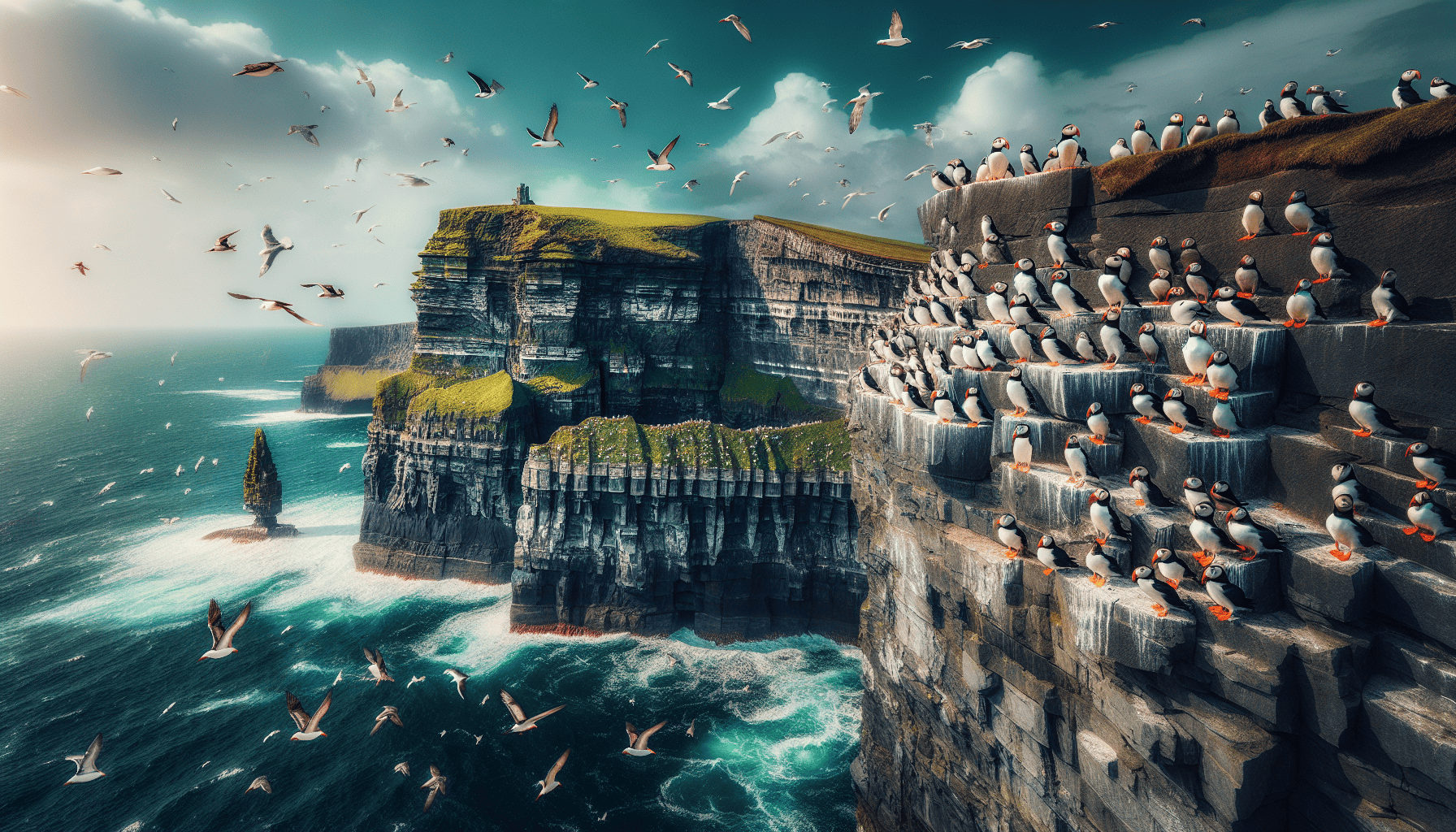
Some of the birdwatching hotspots in Ireland where various seabirds can be observed are:
The Cliffs of Moher, which are inhabited by a diverse range of bird species, such as Guillemot and a substantial colony of cliff nesting birds
Skellig Michael, which offers the opportunity to observe puffins and gannets during the prime period from late spring to the second week of August
Great Saltee
Horn Head
Birdwatchers have the option of utilizing a ferry service from Kilmore Quay to reach Great Saltee Island. For Horn Head, they can access the most northerly point for birdwatching by following the cliff path. Enthusiasts may have the opportunity to sight distinctive or uncommon species like:
Manx Shearwater
Fulmar
Lesser Black Gulls
Rock Doves
Choughs
Puffin
Greenland White-fronted Geese
White-tailed Eagles
Razorbill
At these renowned Irish shores locations in Ireland.
The Beauty of Ireland’s Remote Islands
The Aran Islands and the Blasket Islands, among other remote islands of Ireland, provide unique opportunities for encountering rare wildlife and experiencing unspoiled natural beauty. The principal remote islands of Ireland comprise the Aran Islands (Inis Mór, Inis Meáin, and Inis Oírr), Inishbofin, Inishturk, Clare Island, Coney Island, Dursey, Bere, Toraigh, and Achill Island. The Aran Islands harbor a diverse array of wildlife species, such as Swallows, House-Martins, Curlus, Pheasants, skylarks, and Oystercatchers.
The Blasket Islands exhibit a significant amount of biodiversity, particularly in terms of avian and marine species. The surrounding waters are abundant with various forms of life. The cliffs and rocky outcrops of Ireland’s remote islands provide a sanctuary for various seabirds, including Puffins, Gannets, and Guillemots. Notably, Rathlin Island hosts Northern Ireland’s largest seabird colony.
A variety of rare or endangered species, such as island endemics, seals, sawfish, and rhino rays, Barbary macaque monkeys, and hen harriers, can be found on Ireland’s remote islands, which are distinct from mainland Europe in terms of biodiversity.
Seasonal Wildlife Highlights
Whale season in July, dolphin sightings in spring and summer, and puffin spotting in June and July are the seasonal highlights for wildlife watching in Ireland. The peak season for dolphin sightings in Ireland occurs from August to December, which also aligns with a favorable season for whale spotting, particularly during the autumn months along the coast.
The most favorable time for observing puffins in Ireland is during their breeding season, which occurs from April to August. The Cliffs of Moher are particularly ideal for puffin spotting from late May to mid-July. These seasonal variations offer unique opportunities for wildlife enthusiasts to observe different species at their best at locations such as:
The Skelligs
The Cliffs of Moher
The Saltees
Rathlin Island
The Role of Irish Zoos and Aquariums
Playing a vital role in education and conservation, Irish zoos and aquariums enlighten the public about local and exotic wildlife. Institutions like the Aquarium in Galway provide educational tours and workshops, promoting conservation and offering exceptional lifelong learning opportunities.
Irish zoos and aquariums contribute to conservation efforts by engaging in activities such as breeding threatened species, engaging with governments, supporting conservation efforts, and protecting native wildlife. Specifically, Dublin Zoo operates a Centre for Species Survival, supports over 25 conservation projects globally, and has successful breeding programs for species at risk.
These institutions have evolved over time, shifting focus towards conservation initiatives, breeding programs, and raising public awareness about wildlife.
Top Tips for Responsible Wildlife Watching
Following certain guidelines is essential to ensuring a responsible and enjoyable wildlife watching experience. Maintaining a respectful distance when observing wildlife, refraining from pursuing or approaching them, and avoiding feeding the animals are some measures that can be taken to respect and safeguard the natural habitats of Irish wildlife. Irresponsible wildlife watching can have serious consequences, such as habitat destruction, causing stress to animals resulting in changes in their behavior, overcrowding, animal cruelty, and disruption of migratory patterns.
The advised distance to maintain from wildlife in Ireland is to provide them with ample space and avoid causing disturbance. Observing wildlife from such a distance helps minimize stress and preserves their natural behavior. Furthermore, refraining from feeding wild animals is significant due to the potential development of harassment behavior in animals and the establishment of an unhealthy dependency on humans for food, which disrupts their natural foraging behaviors and diet.
Summary
From the rich biodiversity of Ireland’s ecosystems to the enchanting beauty of its remote islands, Ireland’s natural heritage has been a captivating journey. The country’s commitment to conserving its wildlife, reflected in its national parks, zoos, and aquariums, underscores the significance of preserving this rich biodiversity. As we admire the beauty and diversity of Irish wildlife, let’s also remember our responsibility to ensure that future generations can experience the same enchantment.
Frequently Asked Questions
What wildlife is native to Ireland?
Ireland is home to a variety of native wildlife, including the iconic red squirrel and a diverse range of land and sea mammals, birds, plants, and insects. This biodiversity includes species like hedgehogs, pine martins, seals, whales, and over 400 bird species.
What is the largest predator in Ireland?
The largest predator in Ireland is the badger, recognized by its white head with dark stripes. Badgers are powerfully built with a stocky body and muscular legs.
What is the rarest wildlife in Ireland?
The rarest wildlife in Ireland is the pine marten, considered one of the most elusive species, which had become extinct from the majority of the country by the 20th century.
What is Ireland’s national animal?
Ireland’s national animal is the Irish hare, which is exclusive to the country and known for its large size, russet brown coat, and white tail.
What is the iconic animal of Ireland?
The iconic animal of Ireland is the Irish hare, which is unique to the country and has been present for millions of years. It is larger than a rabbit and has a distinctive russet brown coat and white tail.

